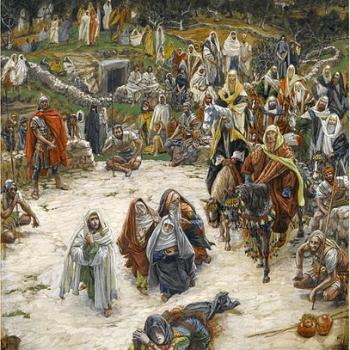
My seven-year-old daughter balked.
“Do I really have to rest?”
“Yes,” I said. “This is our schedule when you’re at school. It’s part of our day. You don’t have to fall asleep, but you do have to sit or lie down quietly and read, draw, pray. Rest and silence is good for your body and for your brain. It helps you grow.”
The conversation whisked me back in time. My grandfather, after eating his midday meal and before he returned to his farm chores, would take a seat in his old brown recliner. If his clothes were too dirty, he would lie on the dining room floor. Like the venerable Van Gleck grandsire in Hans Brinker, he would sometimes throw his red handkerchief over his face. Fifteen minutes, more or less, and then he was up, rested and ready for the afternoon.
In our Midwestern German farming culture, the institution of the midday nap hung on long into the 20th century. My father’s mother took one as well, darkening her bedroom and disappearing for exactly one hour to pray the Rosary and rest. Our babysitter enforced a strict post-lunch silence, mostly for her own sake. She called it her “forty winks,” and we sat silently in wonder, winking to ourselves and wondering how she made it work.
The nap, like many other beautiful old things, has mostly slipped away from us. I have found it dozing only in the old societies and odd corners of our country: a tiny, eccentric co-worker, who crawled under her desk with a sleep mask and a blanket for the remainder of her lunch hour. The Amish farm family from whom I get goat milk, who calls it their “noon-nap.”
The nap is even disappearing from the last bastions of siesta culture in places like India and Spain. It has been replaced by school and work, all the world over.
It is debatable whether our bodies benefit from a formal period of daytime rest. Most of us no longer engage in agriculture, allowing us to wake later in the day. Our sleep patterns have also changed drastically over the past century, morphing to fit technologies like electricity, central air conditioning and back-lit viewing screens. We’ve outgrown the bodily need for a siesta — but what about our souls? We might argue that the holiest of saints went without much sleep. Father Aloysius Roche recounts the efforts of many of them, including St. Catherine of Siena, who got two hours per night, and St. Francis of Assisi, who considered his down pillow to be a temptation of the Devil. On the other hand, our Lord himself didn’t let much get in the way of his shut-eye. The Rule of St. Benedict (and many monastic schedules afterward) codify a period of daytime rest.

In our fast, noisy hive of a world, a nap is a small but powerful sign of contradiction. In the words of Bishop Conley, it “means witnessing to something more delightful, more profound, and more meaningful than what our world offers.” To rest is to acknowledge that our work will still be there when we awake, that not everything depends on our scurrying and striving. In napping, we witness that silence has value for our bodies and souls and that we as human beings matter more than the frantic productivity of the world. As the Catechism says of the Sabbath, it is a “protest against the servitude of work and the worship of money.”
A nap is a small rebellion, maybe just fifteen minutes under an old red handkerchief, but it is also a slice of eternity, “refreshment, light and peace.” Revolt against the world and rest, lying down to sleep or sitting quietly to pray, read, draw. It is good for your body and your soul. After all, “better is a handful of quietness than two hands full of toil and striving after the wind.” -Ecclesiastes 4:6
















